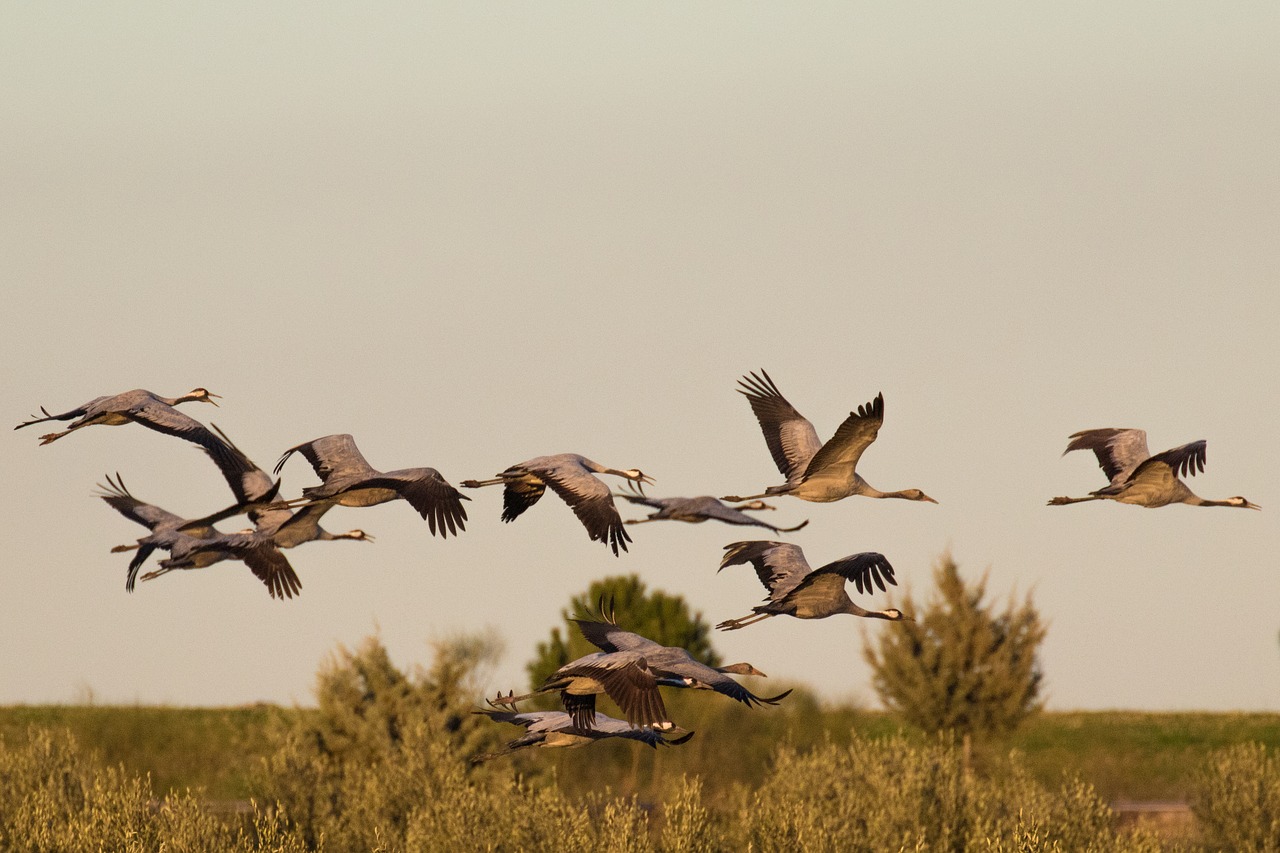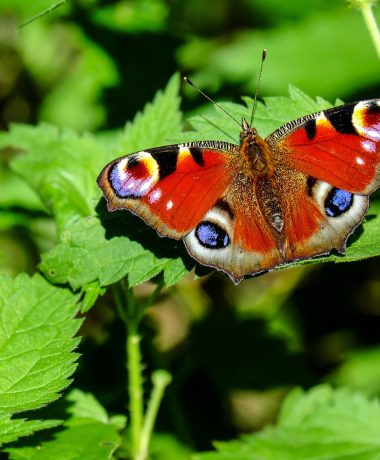(Alleen in het Engels)
There are fifteen species of cranes in the world. Our country only counts one: the common crane. In the department of Aube, they are seen flying in groups above our heads twice a year.
The Common crane « Grus grus » (Linné, 1758)
The elders had noticed that the squadron leader of the crane group would regularly lose his position after a few minutes to become a simple citizen among the others.
Therefore, they had decided that the crane would be the living symbol of the democracy created by the Athenians in the 6th century BC.
Until the 19th century, the species was more widespread in France before it started to decrease.
This beautiful ash-grey wild wader, with its bright red cap and its majestic slim body, is one of the largest observable birds in France.
Since 1967, this is a protected species in our country but it is very vulnerable because of the disappearance of nesting habitats, protecting from predators: marshes, islets, peat bogs.
Cranes flying in a group forming a « J » (10 of them), a « V » or a « W » (150 to 200 cranes).
Twice a year, in February-March for nesting, and in October for wintering, cranes are seen and heard, with trumpeting cries reaching until 4 kms away, flying in formation of « J » (10 of them), « V » or « W » (150 to 200 cranes).
Flying a thousand kilometers non-stop
They migrate from south to north and then the opposite on the way back, they can fly for 1000 km without stopping, with their neck and legs stretched out like the storks.
They can reach an average of 60 km/h depending on the wind and weather, over a 2400 km distance and at 1500 m of altitude.
The common cranes head towards the sun or the stars map, even over the Mediterranean sea or mountain passes.

It is 1.20 m high, it weights about 5 kg and has a wingspan of 2.40 m: the common crane is the only crane in France.
A small number of cranes winter in Europe and are welcomed in specific area.
In the wet Champagne, this area is mainly located on the Der-Chantecoq Lake (Marne and Haute Marne departments). In 2018, 89 000 cranes were counted there.
To have a break and feed during their migration, they stop three to four times and walk (a crane step is of 60 cm) to search for cereal shoots, molluscs and insects, especially in wet area bordered by hedges and groves: they are omnivorous.
How long do they appear to live? About 26 years in the wild and until 42 years for the oldest crane.
Because of its morphology, you will never see it perch ; on the other hand, it runs very well and lives in a group.
It is 1.20 m high, it weights about 5 kg and has a wingspan of 2.40 m. How long do they appear to live? About 26 years in the wild and until 42 years for the oldest crane.
At the time of breeding, the couple performs a parade dance with their neck upright.
In April-May, two eggs are laid and incubated alternately, thirty days on the ground on a dry grass nest, surrounded by water.
When they hatch, the young follow their parents in search for food.
They are nidifugous, which means that they leave their nest, contrary to other altricial birds, which wait for the food.
The approximately 4 months old cubs make their first migratory flight in Spain with their parents, around mid-October.
With the authorization of « l’Est Eclair / Libération Champagne »

